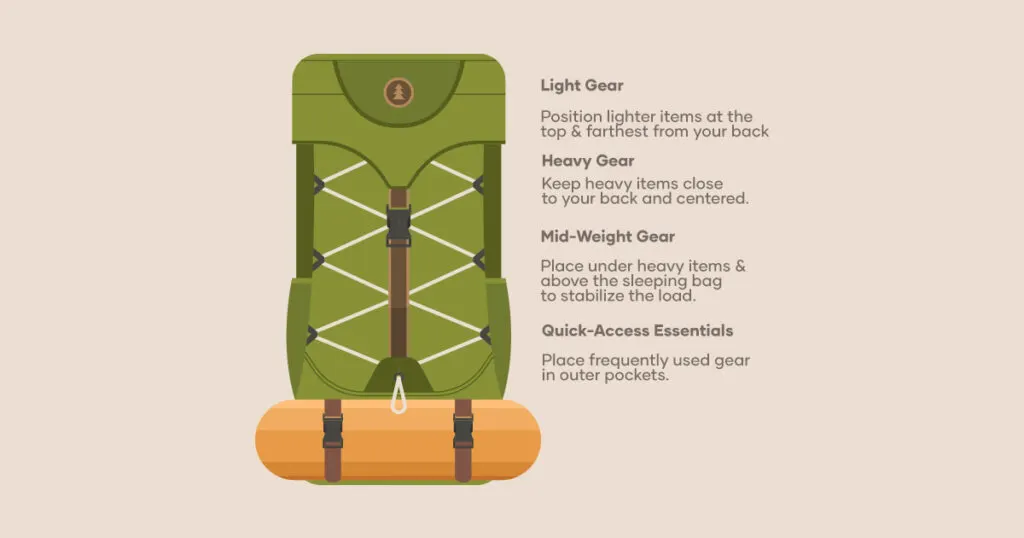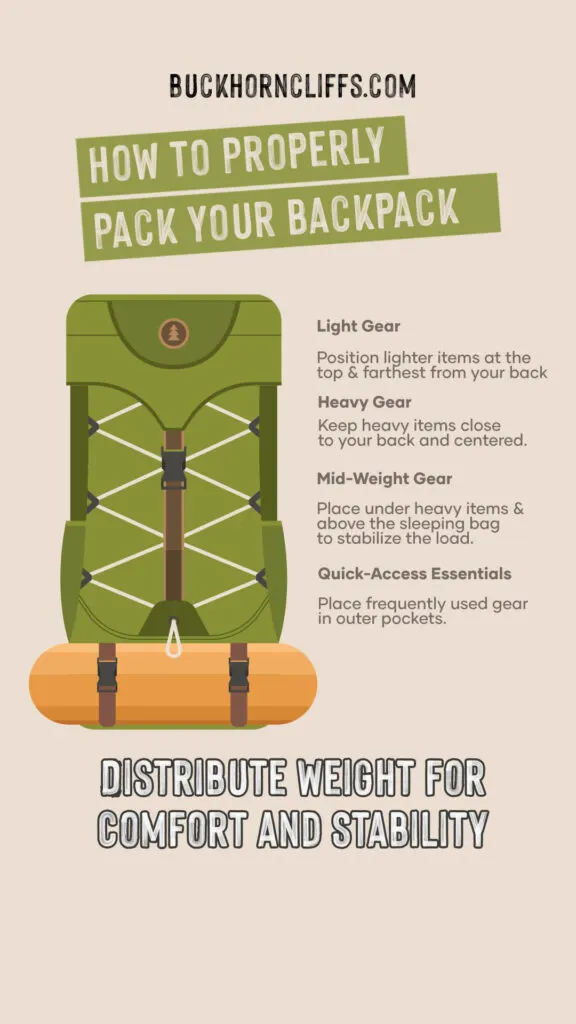Packing your backpack correctly is essential for comfort, balance, and safety, especially during long hikes or extended trips. Improper weight distribution can lead to discomfort, fatigue, and even injury. Here’s a guide on how to pack your backpack effectively by distributing the weight in a way that maximizes comfort and stability.

Heavy Gear Centered
Placement:
Keep heavy items close to your back and centered in your backpack. This helps maintain your center of gravity and prevents the pack from pulling you backward.
Examples:
Water reservoirs, food supplies, cooking gear, or dense items like fuel or batteries.
Why It Matters:
By centering heavy items close to your back, you ensure that the weight is distributed evenly across your body, reducing strain and helping you maintain balance on uneven terrain.
Mid-Weight Gear
Placement:
Position medium-weight items under the heavy items and above your sleeping bag. This setup helps stabilize the load and keeps the heaviest gear from shifting during movement.
Examples:
Clothing layers, sleeping bags, or shelter components like tent poles.
Why It Matters:
Proper placement of mid-weight items supports the heavy gear above, preventing it from shifting and causing imbalance. This creates a more stable and comfortable pack.
Light Gear Top
Placement:
Store lighter items on top and furthest away from your back. This keeps them accessible without affecting the pack’s overall balance.
Examples:
Rain jackets, snacks, maps, first aid kits, and other small, light gear.
Why It Matters:
Lighter items are less likely to disrupt your balance, making them ideal for the top of your pack. This also ensures that you can quickly reach them when needed.
Quick-Access Essentials
Placement:
Place items you need quickly or frequently in outer pockets or at the top of your pack. This reduces the need to unpack and repack your gear throughout the day.
Examples:
Headlamp, water filter, snacks, maps, and first aid supplies.
Why It Matters:
Having essential items easily accessible saves time and effort, particularly during long treks or in situations where you need to react quickly, such as changing weather conditions.
Packing your backpack with the correct weight distribution can make a significant difference in your hiking experience. Remember to keep heavy items close to your back and centered, place mid-weight items to stabilize the load, store lighter items on top and furthest away from your back, and keep essential gear easily accessible. By following these guidelines, you’ll ensure a comfortable, balanced, and enjoyable journey, no matter where your adventures take you.


Lexi Santiago-McLean
Monday 26th of August 2024
Thank u so much for the 411 appreciate u
Rob Benson
Tuesday 27th of August 2024
Welcome!